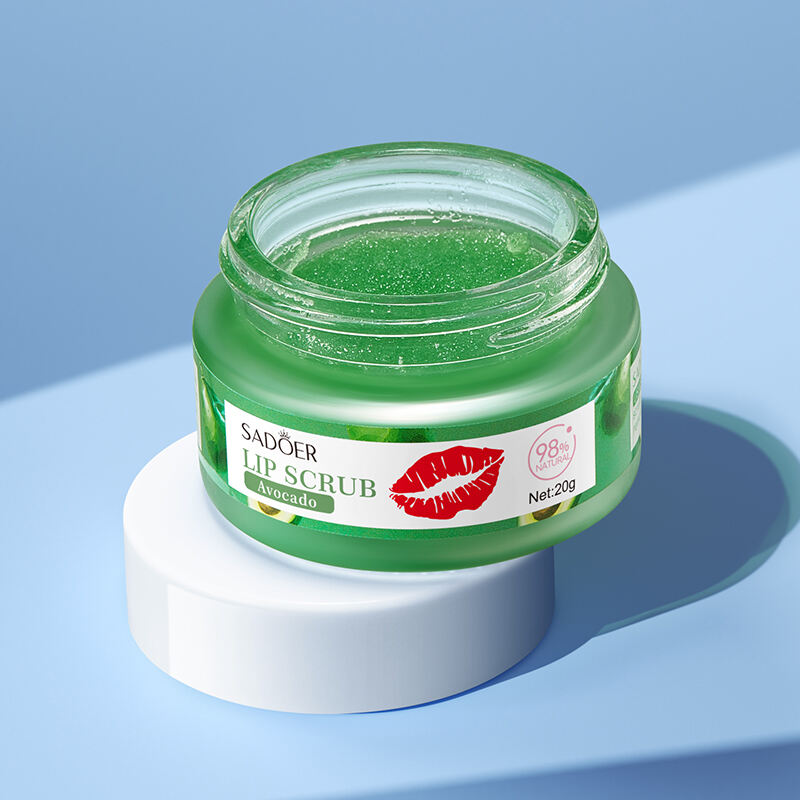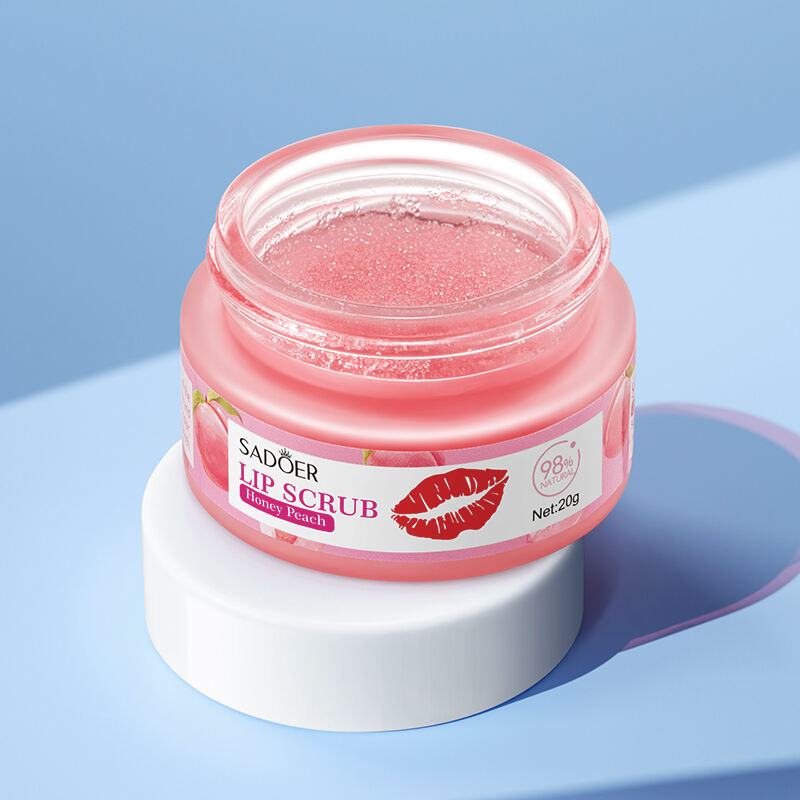Transforming Dry Lips into a Smooth, Healthy Pout
Healthy lips often get overlooked in daily skin care routines, yet they play an outsized role in appearance and comfort. A consistent lip care habit improves texture, prolongs color wear, and prevents painful cracking. One of the simplest, most effective additions to that habit is a lip scrub. Regular use of a lip scrub removes flaky skin, enhances hydration, and primes lips for treatments and makeup. Below we explore the many benefits, how a lip scrub works, how to choose the right formula, and exact routines you can adopt to get the best results.
How Lip Scrubs Work and Why They Matter
The science of gentle exfoliation
Exfoliation is a controlled process of removing the outermost layer of dead cells to reveal fresher tissue below. Because the lips have thinner skin and lack oil glands, they accumulate dry cells more quickly than other facial areas. A lip scrub combines mechanical exfoliation with nourishing agents; the abrasive particles lift and disperse flakes while oils and humectants soothe and seal moisture. The next time you run your finger over newly exfoliated lips, you’ll notice the immediate difference that a lip scrub makes in smoothness and feel.
Why timing and technique influence outcomes
Technique matters when using a lip scrub. Too much pressure or overly coarse particles can cause microtears in the delicate lip skin, so a gentle circular motion is recommended. Frequency is also important: a lip scrub used two to three times weekly is sufficient for most people, while those with extremely dry or reactive lips may need to start with once weekly. Done correctly, a lip scrub improves the condition of lips without triggering irritation.

Immediate Benefits You Will Notice
Smoother texture and improved appearance
One of the most visible benefits of a lip scrub is the immediate smoothing effect. Removing dead skin produces an even surface that reflects light better and looks healthier. This smoother canvas improves the way lip balms and lipsticks sit on the lips, allowing pigments to lay down evenly and reducing patchiness. If you find colors settle into cracks or flake off quickly, incorporating a lip scrub into your routine can make a dramatic difference.
Brighter, more even tone
Discoloration and dullness on the lips are often the result of accumulated dead cells and external exposure. Regular exfoliation with a lip scrub promotes cell turnover and can reduce the appearance of dark or uneven patches. While deep pigmentation may require targeted treatments, many everyday tone irregularities respond well to consistent gentle scrubbing combined with moisturizing care.
Long-Term Advantages of Regular Use
Enhanced hydration and barrier function
By removing the barrier of dead cells, a lip scrub allows conditioning ingredients to penetrate more effectively. This means that moisturizers and lip treatments perform better after exfoliation. Over time, the combined effect of exfoliation plus nourishment helps restore the natural barrier function of the lip skin, making it more resilient to environmental stressors and less prone to persistent dryness.
Reduced incidence of chapping and cracking
A regular lip scrub schedule reduces the build-up that causes flaking and painful fissures. When lips are smoother and better hydrated, they are less likely to form deep cracks during cold weather or after repeated lip product use. A lip scrub used as part of a protective routine—especially before bed—reduces the cumulative damage that leads to chronic dryness.
The Role of Lip Scrubs in Makeup and Cosmetic Care
Preparing the perfect canvas for lipstick and gloss
Makeup longevity and finish are closely tied to the condition of the skin beneath. A lip scrub creates the even surface necessary for creamy or matte lipsticks to adhere properly. Without dead skin interfering, pigments distribute more uniformly and satiny glosses sit more smoothly. For anyone who values clean lines and true color payoff, adding a lip scrub prior to application is a small step with outsized payoff.
Reducing product buildup and improving product efficiency
Lip products themselves can contribute to flakiness because residues trap dead skin and oils. Regular use of a lip scrub prevents this accumulation, meaning you’ll use less product over time to get the same results. In addition, treatments like overnight lip masks penetrate deeper and perform better when preceded by a lip scrub.
Choosing the Right Lip Scrub for Your Needs
Key ingredients that matter
A high-quality lip scrub balances effective exfoliants with nourishing components. Common gentle abrasives include fine sugar, jojoba beads, or ground rice; avoid overly sharp materials that can lacerate the skin. Look for humectants like glycerin or honey and emollients such as coconut oil, shea butter, or jojoba oil to replenish moisture. Natural botanical extracts—like calendula or chamomile—can add calming benefits for sensitive lips.
Avoiding irritants and allergens
Because lip skin often contacts the mouth, ingredient safety is critical. Fragrance, essential oils at high concentrations, and certain synthetic additives may irritate or trigger allergic reactions. If you have sensitive skin or a history of reactions, choose a lip scrub labeled hypoallergenic or formulated for sensitive skin, and perform a patch test before regular use.
How to Build an Effective Lip Care Routine Around a Lip Scrub
When to scrub and what to follow with
The most effective routine pairs a lip scrub with a post-exfoliation hydration step. After gently scrubbing and rinsing, pat lips dry and immediately apply a rich lip balm or treatment containing occlusives (like beeswax or petrolatum) and humectants (such as hyaluronic acid or glycerin). For daytime, follow with an SPF-containing lip product to protect fresh skin; at night, apply a thicker restorative balm.
Integrating a lip scrub with other treatments
If you use active lip treatments for pigmentation or collagen support, schedule scrubs thoughtfully. Exfoliate the day before applying strong actives to avoid excessive sensitivity. When combining treatments, less is often more—two to three weekly exfoliation sessions paired with nightly nourishment typically give optimal results without overtaxing delicate lip tissue.
DIY vs. Store-Bought Lip Scrubs
Pros and cons of homemade scrubs
DIY lip scrubs are simple to make from household ingredients like sugar and coconut oil, and they offer control over components and texture. However, homemade scrubs can vary in particle size and hygiene if not stored properly. Avoid ingredients that may be too abrasive or that spoil quickly without preservatives.
Advantages of formulated products
Commercial lip scrubs often include refined particle sizes, tested preservative systems, and added actives (like peptides or vitamin E) designed for safety and efficacy. For those who want guaranteed consistency and proven performance, a well-formulated lip scrub is a dependable option.
Special Considerations and Safety Tips
How to exfoliate without causing damage
Be gentle: use light pressure and small circular motions. Keep scrubbing sessions brief—thirty seconds to one minute is sufficient—and limit frequency to prevent irritation. If lips feel raw or overly sensitive, reduce frequency and apply soothing, non-irritating balms until normal.
What to do if irritation occurs
Stop exfoliating immediately if you notice redness, swelling, or persistent soreness. Apply a bland, fragrance-free lip balm and avoid active ingredients until lips recover. If symptoms worsen or do not improve, seek medical advice as you may have a reaction or infection.
Addressing Common Questions About Lip Scrubs
Can lip scrubs increase collagen or plumpness?
Exfoliation can temporarily enhance circulation and give a fuller appearance, but long-term plumping generally requires targeted ingredients (like peptides or hyaluronic acid) and lifestyle factors. Using a lip scrub frequently does support treatments that boost collagen by allowing better penetration of active ingredients.
Are lip scrubs necessary year-round?
Season and lifestyle affect frequency. In winter or during dry travel, regular use of a lip scrub helps prevent severe flaking. In humid months, reduce frequency if lips feel sufficiently hydrated. Pay attention to your lips’ condition and adjust accordingly.
Incorporating Lip Scrubs into a Self-Care Ritual
The sensory and psychological benefits
Beyond physical improvements, ritualized self-care like a lip scrub session can be calming and enjoyable. Taking a few minutes to focus on skin health can reduce stress and reinforce a broader wellness routine. Choosing pleasant textures and subtle scents (or fragrance-free for sensitive types) makes the practice feel luxurious and sustainable.
Travel-friendly strategies
Pocket-sized lip scrubs or single-use pads are convenient for travelers who face plane-induced dryness. Keep a small balm in your bag for immediate hydration after exfoliation to maintain lip comfort on the go.
Advanced Tips for Maximizing Lip Scrub Results
Layering products for durable hydration
For long-lasting moisture, apply a humectant-based serum immediately after scrubbing, followed by an occlusive balm. This sequence traps moisture effectively and creates a protective barrier that reduces environmental water loss.
Using lip scrub before professional treatments
If you plan to use cosmetic procedures—such as lip tinting or laser treatments—consult your practitioner about scheduling exfoliation. A gentle lip scrub in the days leading up to treatment often improves outcomes, but avoid exfoliation immediately before any invasive procedure.
FAQ
How often should I use a lip scrub?
Most people benefit from using a lip scrub two to three times per week. If you have sensitive lips, start with once weekly and monitor how your lips respond before increasing frequency.
Can I use a lip scrub if I have cold sores?
Avoid exfoliating over active cold sores. Exfoliation can spread the virus or aggravate lesions. Wait until sores are fully healed and consult your healthcare provider about safe timing.
Is a lip scrub safe during pregnancy?
Generally yes, if the lip scrub contains safe, non-absorbable ingredients. Avoid high concentrations of certain essential oils or untested botanicals. When in doubt, choose products labeled safe for pregnancy or consult your provider.
What should I pair with a lip scrub for best results?
Follow a lip scrub with a nourishing balm that contains occlusives and humectants. For daytime, pick a product with SPF; at night, use a richer treatment to support repair.
Table of Contents
- Transforming Dry Lips into a Smooth, Healthy Pout
- How Lip Scrubs Work and Why They Matter
- Immediate Benefits You Will Notice
- Long-Term Advantages of Regular Use
- The Role of Lip Scrubs in Makeup and Cosmetic Care
- Choosing the Right Lip Scrub for Your Needs
- How to Build an Effective Lip Care Routine Around a Lip Scrub
- DIY vs. Store-Bought Lip Scrubs
- Special Considerations and Safety Tips
- Addressing Common Questions About Lip Scrubs
- Incorporating Lip Scrubs into a Self-Care Ritual
- Advanced Tips for Maximizing Lip Scrub Results
- FAQ

